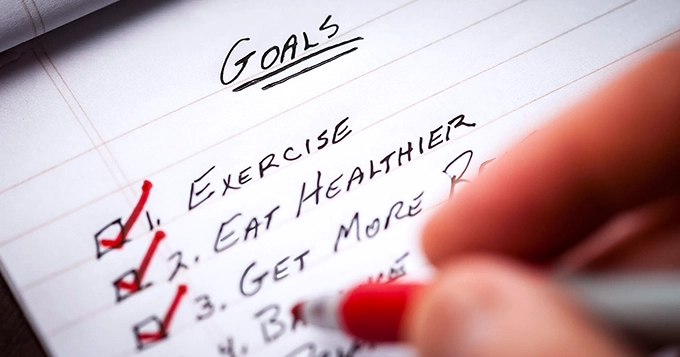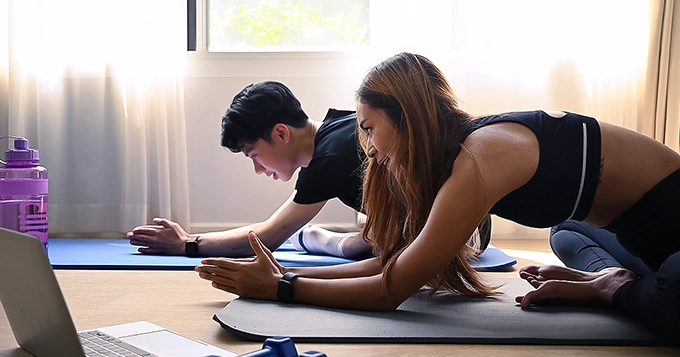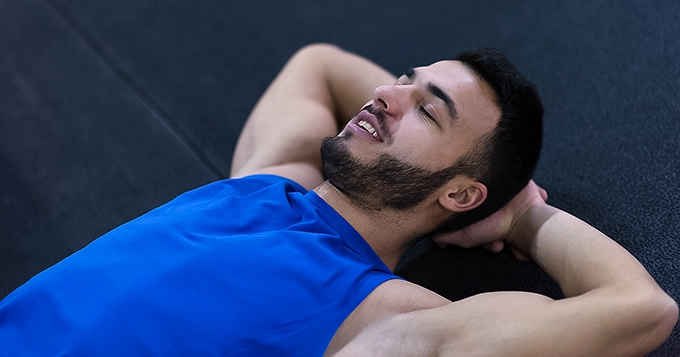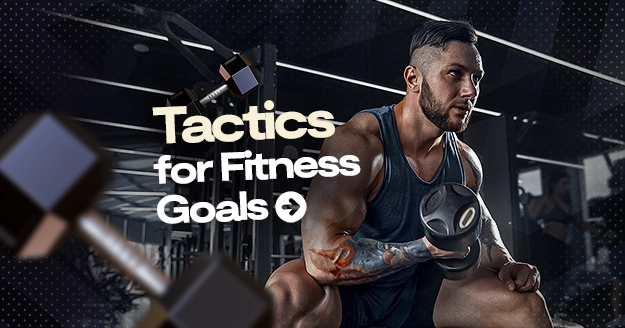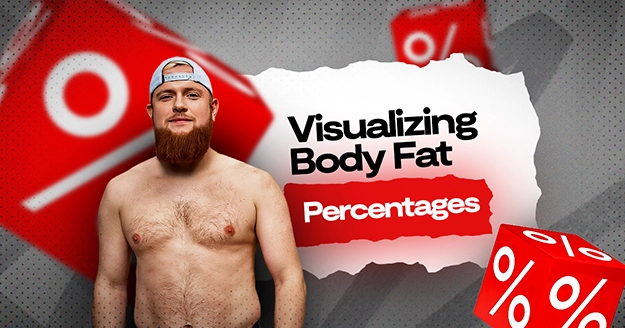How to set fitness goals for beginners?
Determining your goals before establishing actionable steps is crucial to your success. To be fit and healthy requires commitment and consistency. Defining your journey’s purpose will serve as a reminder during tough times.
That inner drive will help you stay committed to your fitness journey, whether your goal is to complete a half marathon next year or simply to improve your quality of life.
Setting effective fitness goals is crucial for staying motivated and making progress on your fitness journey.
Determine Your Priorities
Decide what your most important fitness goal is. Are you looking to lose weight, improve cardiovascular health, build muscle, or enhance overall well-being? Prioritizing your goals will help you focus your efforts and stay on track.
Reflect on Your Current Fitness Level
Take some time to assess your current fitness level. You can then identify areas you would like to improve. Consider factors such as endurance, strength, flexibility, and overall health.
Identify your long-term goals
Long-term fitness goals for beginners are those targets that typically span from 6 to 12 months to achieve. For instance, you might aim to embark on a body recomposition journey, shedding fat while gaining some muscle to achieve your desired body shape.
Keep yourself on track by writing down your goals and placing them in spots where you’ll see them every day. This way, you’ll be regularly reminded of the commitment you’ve made to yourself.
Identify your short-term goals
While having a long-term goal is crucial as a roadmap, it’s only part of the equation. Short-term goals break down your overall fitness ambition into smaller, achievable steps. Remember, achieving your desired physique takes time and effort—it’s not an overnight process!
Make these goals realistic and measurable
It’s common for people to set ambitious fitness goals, like aiming to lose a specific percentage of body fat in a short time frame. However, setting extreme objectives can lead to disappointment if they’re not met.
Instead of fixating on the scale, focus on your physical activity levels. Start by committing to working out 3 days/week. Once you’ve established this routine, aim to stick with it for one month, then three months.
Achieving and marking off each goal creates a positive, attainable progression.
What are fitness goals examples?
Fitness goals can vary greatly depending on an individual’s preferences, current fitness level, and overall health objectives. Here are some common fitness goals examples:
- Weight Loss: Many people set goals to lose weight as part of their fitness journey. This might involve aiming to shed a certain number of pounds over a specific period, such as losing 10 pounds in two months.
- Muscle Gain: For those looking to build strength and increase muscle mass, goals might include gaining a certain amount of muscle size or definition, such as adding inches to bicep circumference or increasing overall muscle mass by a certain percentage.
- Cardiovascular Endurance: Improving cardiovascular fitness is another common goal. This could involve aiming to run a certain distance without stopping, such as completing a 5k or 10k race, or increasing endurance in a specific activity like cycling or swimming.
- Flexibility and Mobility: Increasing flexibility and mobility can enhance overall fitness and reduce the risk of injury. Goals might include being able to touch your toes, perform a split, or improve range of motion in specific joints.
- Strength Training: Many individuals focus on improving their strength through weightlifting or bodyweight exercises. Goals might include achieving a certain weight on a particular lift, such as squatting or bench pressing a certain amount, or mastering advanced bodyweight movements like pull-ups or handstand push-ups.
- Functional Fitness: Some people aim to improve their overall functional fitness, which involves the ability to perform everyday tasks with ease and efficiency. Goals might include being able to lift heavy objects, climb stairs without getting winded, or maintain balance and stability in various situations.
- Sports Performance: Athletes often set specific goals related to their sport, such as increasing speed, agility, or power, improving skills like shooting or passing in team sports, or achieving a certain level of performance in competitions.
- Overall Health and Wellness: Many individuals prioritize overall health and wellness as their primary fitness goal. This might involve reducing risk factors for chronic diseases like diabetes or heart disease, improving mental health and well-being, or simply adopting a more active lifestyle to feel better both physically and mentally.
Now, you have a clear idea of what your fitness goals are. The next steps to achieve fitness goals are with these three tactics:
-
Assess Your Nutrition
Embarking on a fitness journey isn’t easy, but overcoming obstacles is worthwhile with dedication and commitment. While physical activity boosts endurance and strength, achieving successful results hinges on evaluating your nutrition.
A balanced diet supplies essential nutrients to fuel your workouts and aid muscle recovery. Cultivating healthy eating habits is crucial to steer clear of processed foods that could hinder your progress.
-
Find A Workout Program That You Like
Achieve fitness goals using a workout program that you like.
Fitness becomes enjoyable when you find an activity that ignites your passion. With ever-changing trends, there’s a wide array of fitness programs to choose from. Whether you prefer solo workouts at the gym, using commercial treadmills, or participating in group classes that fit your schedule, the options are abundant. Regardless of your choice, ensure your exercise routine incorporates the following elements: strength training, cardio, and high-intensity interval training (HIIT).
Strength training boosts strength and accelerates fat burning. Engaging in cardio at least once a week benefits your cardiovascular health. HIIT is perfect for busy days when time is limited but you still crave the post-workout high. Additionally, aim for at least 30 minutes of light movement throughout the day.
When you find an activity you enjoy, exercise feels like a fun endeavor, making it easier to achieve your fitness goals.
But it doesn’t just end with doing the exercise, you also need to monitor your physical activity regularly.
Establish clear ways to monitor your progress and diligently recording every detail in a training diary. Here are some suggestions:
1. Use concrete measurements: If you’re weight training, jot down the weight you lifted and the number of reps for each exercise. For weight loss, keep track of changes in your body weight.
2. Choose appropriate measurement methods: Consider using a tape measure to track changes in your body measurements or pay attention to how your clothes fit, as bathroom scales may not accurately reflect changes in muscle versus fat.
3. Utilize various monitoring methods: Record your progress regularly, such as weekly, and include different aspects like exercise sessions, daily diet, and body measurements. Acknowledge incidental achievements such as increased energy levels or fitting into smaller clothing sizes. Provide yourself with multiple avenues for success.
4. Celebrate your progress: Take time to acknowledge and celebrate each milestone you achieve, no matter how small.
-
Prioritize Your Recovery
Physical activity and proper nutrition are essential components of a successful fitness routine, but giving your body time to recover outside the gym is equally important. Exercise places significant stress on your joints and muscles, necessitating adequate time for healing and recovery.
Incorporate a designated recovery day into your workout schedule to replenish your energy and prepare for future sessions. Nourish your body by filling it up with nutritious food, staying hydrated, and ensuring you get quality sleep to support optimal recovery.
You can create a quality sleep schedule.
Quality sleep is crucial for your fitness routine, as it helps prevent burnout and supports progress.
Plan your day around this sleep schedule rather than the other way around. While daily responsibilities are important, it’s challenging to fulfill them when you’re running on low energy. Prioritizing quality sleep ensures you’re better equipped to tackle your tasks and make progress toward your fitness goals.
By prioritizing recovery alongside exercise and nutrition, you’ll promote overall wellness and enhance your fitness journey.
Conclusion
Implementing these tactics sets a solid foundation for success in your fitness journey. Remember that progress takes time and patience, so stay committed and celebrate your achievements along the way. With dedication, commitment, and perseverance, you can achieve your fitness goals and become your healthiest version.

